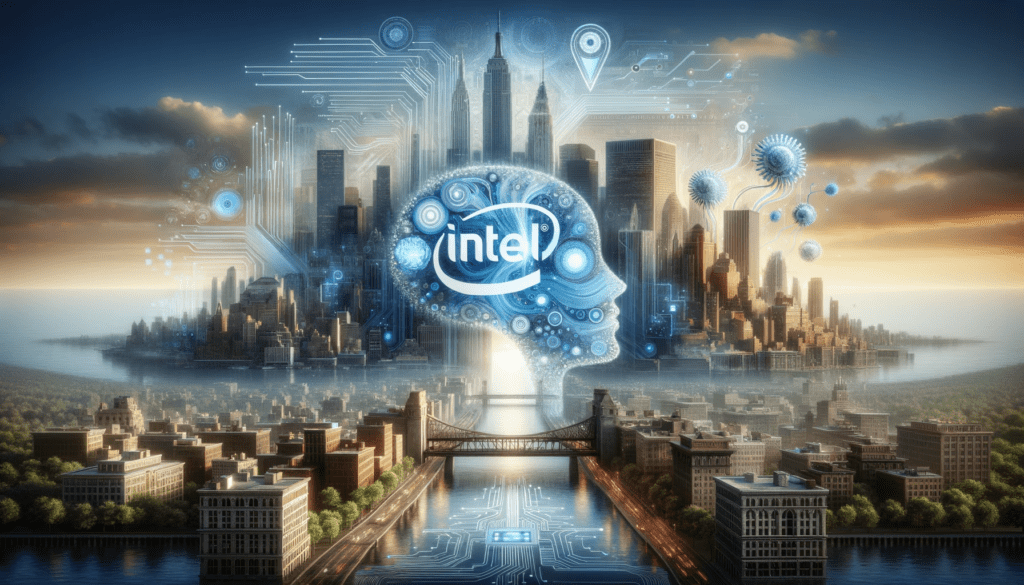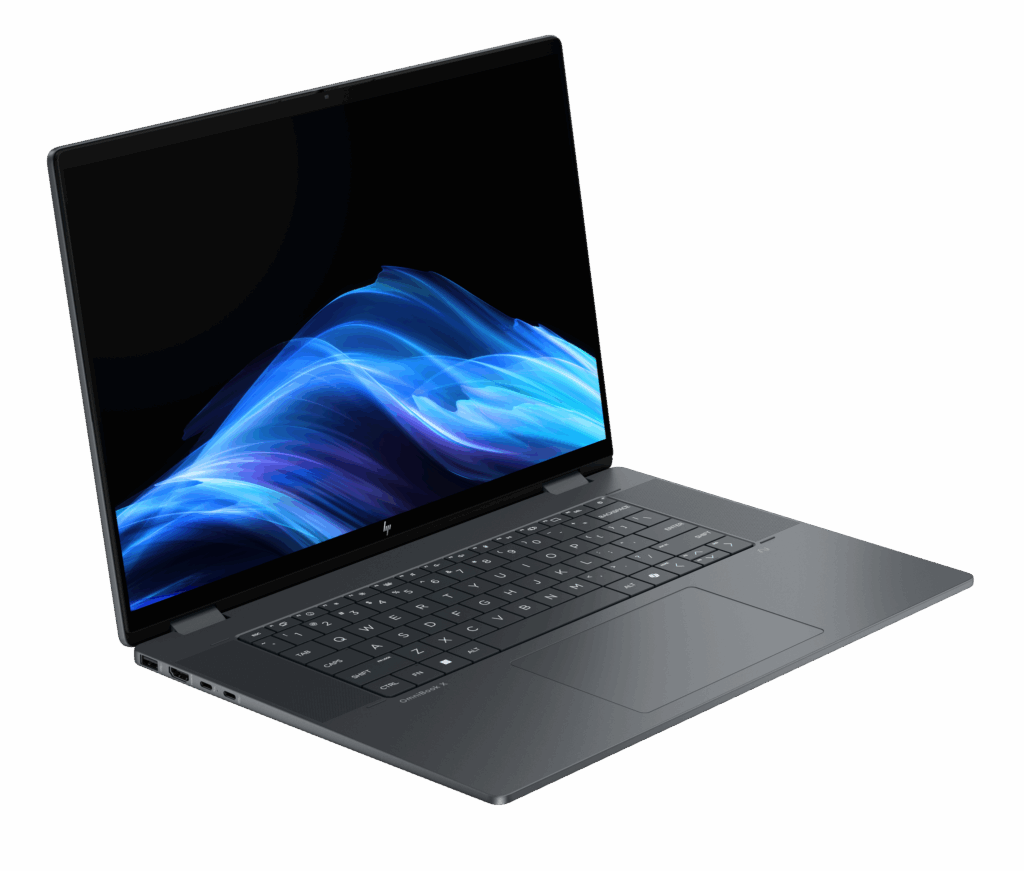I’m writing this in New York, where I’ve been watching my old friend and Intel CEO Pat Gelsinger talk about AI. He started his talk with applied AI and how it is used in the Starkey Hearing Aids that help him overcome his disability. They’re doing such a good job that most of us didn’t even realize he had a disability.
My experience actually started the night before at a candid dinner where listening to Intel employees reminded me of the Andy Grove days when Intel was young, and people seemed driven and focused. While there were clearly issues, more often than not, employees were proud of what they were creating and seemed to be having fun.
Gelsinger focused initially on economics, physics, and the need to take AI from the edge to the cloud. Intel is one of the companies that can move both at the client and in the cloud. Gelsinger compared it to a Centrino moment. For those who don’t remember Centrino, Wi-Fi sucked because of a lack of focus and standards. Intel launched Centrino and galvanized the market to create Wi-Fi that worked. I believe that if it weren’t for Centrino, we wouldn’t have wrought Wi-Fi. Intel’s AI effort is, according to Gelsinger, just like Centrino, and he should know. He was working for Grove when Centrino launched. (Side story: Grove thought the Centrino logo looked like his prostate, so I’m hoping Gelsinger doesn’t repeat that decision).
The Birth of the AI PC
Branding is important. Intel isn’t the only firm working on the concept of the AI PC, but it’s the first processor company to brand the concept. Referencing the Boston Consulting Group, it’s expected that AI PCs will represent 80% of the market by 2028. This is a conservative estimate because, by 2028, I doubt any PC will be a non-AI PC. The related technology is now branded Intel Core Ultra, which is also Intel’s most sustainable processor with an on-chip NPU (Neural Processing Unit). What makes this sustainable is that the new processor is 2.5x better in energy efficiency than the prior generation.
This is the largest shift in Intel’s architecture in more than 40 years, taking us back to the days of Andy Grove.
How Intel Got It Done
Operationally, the way Intel got this done is that rather than rewarding employees for performance increases, engineers had to both increase performance and efficiency successfully. While this undoubtedly pissed off a lot of folks, it drove the company to execute at a level that hadn’t been seen since Grove, which showcases again the benefit of having a CEO who could bridge the founders of Intel when it was young and vibrant to the current Intel which is again vibrant but no longer young. Gelsinger may be the human equivalent of a corporate fountain of youth. I think a lot of other CEOs could learn from him (I knew Andy Grove, and I think he’d be immensely proud of the work Gelsinger has done here).
One other thing that changed at Intel is that it stopped focusing on AMD and Qualcomm, and rather than disparaging those companies, Intel began to rightfully recognize that the competition has done it a massive amount of good. This brings back a memory of a movie, Cannonball Run, where the guy driving the Ferrari ripped off his mirror, citing the first rule of Italian driving: don’t worry about who is behind you. This is what champions do. Focus on the goal and let others worry about it. That is the new Intel, and the momentum and support from companies like Dell, HP, HPE, and Lenovo are almost giddy.
It’s recapturing developers and internally using AI aggressively to speed up development and gain insights into just how these Ultra processors should be built to best benefit its users. Intel had one of the users on stage. Kawehi aggressively uses AI to create a virtual band that backs up her singing. She entertained us prior to the event and her music is impressive. She is a showcase of how the artists of tomorrow may be able to rise without needing to put a band together or spend a lot of time creating contemporary music. Where it used to take weeks to create a track using old skills, now she can do it in hours. As this technology advances, I expect it will take only minutes.
5th Generation Xeon
As I noted, Intel exists both on the desktop and the server. Ultra is a PC processor. The Xeon 5th generation processor is its bigger sibling tied to servers and some workstations. This has a 42% performance increase over the prior generation, and it is tuned for LLM (Large Language Models), which are the basis of generative AI.
One of the interesting aspects is that Intel collaborated with IBM to create this new 5th Gen Xeon. You may recall that Intel also collaborated with IBM to create the initial IBM PC. This partnership was what helped create Intel. I doubt we’d have Intel today if it weren’t for that. Companies don’t usually revisit past successes to find future successes. That is a mistake, one that Intel has overcome with this generation. Since IBM was first to market with Watson (the first enterprise AI implementation), this partnership was critical to Intel’s rapid creation of this 5th Gen Xeon.
Gallium Studios stood up and talked about how a new game using this part is using AI to create proxies, which are virtual people created from users’ memories to create far more realistic NPCs (non-player characters). He said that the cost of doing this on GPUs was too high (I’ve heard this from others), and that NPUs were a far less expensive way to create this experience. This had additional performance and latency advantages as well. This kind of technology will not only create more realistic NPCs but open the potential for the first form of digital immortality, the ability to create digital clones that outlast the people on whom they were based. With technology like this, you will be able to interact with people who are remote or have passed. Kids who grew up playing with their mothers and fathers could return to those experiences after their parents have passed and interact with them the way they were when those parents were alive, and I think that would be world-changing.
This again highlights how effectively Gelsinger has been taking Intel back to its more successful past to find an even more powerful future.
Wrapping Up
Intel Core Ultra is an important announcement, but behind it is a level of execution I haven’t seen from anyone in a long time, particularly from Intel. It represents execution on compensation, focus, energy (employee and electrical efficiency), and vision. I often chat about the importance of having the right CEO and how rare it is to see a company bring back someone like Gelsinger to run the company, a person who knows what made the company initially successful.
Intel’s event was a highlight of how you should do events like this. It’s less about speeds and feeds (though they did have that) and heavy on partner testimonials, particularly user testimonials who can translate the technology into benefits you and I can relate to.
We are beginning a new AI era. From my perspective, we are finally seeing a level of technological advancement that will lead to experiences that would appear as magic to those who founded Intel. I can think of nothing more rewarding or incredibly important than bringing magic into the world.
Excellent job, Intel. I think Andy Grove would be incredibly proud.
- The HP OmniBook X Flip 2-in-1 16-Inch: Your New Digital Swiss Army Knife (Now in Glorious Atmospheric Blue) - June 25, 2025
- The Open AI Avalanche: Why AMD’s Collaborative Spirit Is Outmaneuvering NVIDIA’s Empire - June 22, 2025
- Lenovo Embraces OpenBMC: A Step Towards Greater Transparency and Control in the Data Center - June 17, 2025




Comments are closed.